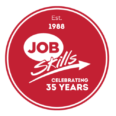
Crafting Your Roadmap to Success – How to Write a Business Plan
Starting a business is an exciting adventure, but without a solid plan, even the best ideas can falter. One of the most critical steps for any entrepreneur or small business owner is creating a business plan. This comprehensive guide will walk you through each section of a business plan, offering valuable insights, practical tips, and relevant examples to help you develop a roadmap for success.
What Is a Business Plan?
A business plan is a formal written document that describes your business idea, outlines your goals, and details the strategies you will use to achieve them. It serves as a blueprint for your business and is essential for guiding your operations, attracting investors, and achieving long-term success.
Why Is a Business Plan Important?
Having a business plan is crucial for several reasons:
- Clarity and Direction: It helps you clearly define your business objectives and the steps needed to achieve them.
- Attracting Investors: It demonstrates to potential investors that you have a well-thought-out strategy and increases your chances of securing funding.
- Managing Growth: It provides a framework for managing and scaling your business effectively.
Executive Summary
The executive summary is the first section of your business plan but should be written last. It provides a snapshot of your business idea and a brief overview of your goals and strategies.
Snapshot of Your Business Idea
Begin with a compelling description of your business idea. Explain what makes it unique and why you believe it will be successful. Include your business name, location, and the product or service you offer.
Overview of Business Goals
Outline your primary business goals and how you plan to achieve them. This could include short-term objectives like launching your product or long-term goals like expanding into new markets.
Key Points
Summarize critical points such as your target market, competitive advantages, and financial highlights. This section should grab the reader’s attention and encourage them to read the rest of your plan.
Company Description
The company description section provides detailed information about your business, including what you do, the needs you address, and your mission and vision statements.
What Your Business Does
Clearly describe what your business does. Whether you’re offering a product or service, explain in simple terms how it works and the benefits it provides. Highlight any innovative aspects that set you apart from competitors.
Market Needs
Identify the specific market needs your business will address. This could relate to gaps in the market, unmet customer needs, or emerging trends. Explain how your business will fulfill these needs effectively.
Mission and Vision Statements
Your mission statement should articulate the purpose of your business and what you aim to achieve. The vision statement should outline your long-term aspirations and the impact you hope to make. These statements help define your brand identity and guide your business decisions.
Market Research
Market research is a critical component of your business plan. It involves analyzing your industry, target market, and competitors to understand the landscape and identify opportunities.
Industry Analysis
Conduct a thorough analysis of your industry. Identify key trends, challenges, and opportunities. Discuss the size of the market, growth projections, and any regulatory factors that may impact your business.
Target Market
Describe your target audience in detail. Who are they? What are their needs and preferences? Use demographic information, psychographics, and buying behaviors to create a clear picture of your ideal customer.
Competitor Analysis
Identify your main competitors and analyze their strengths and weaknesses. What are they doing well? Where do they fall short? Understanding your competitors helps you position your business more effectively and identify areas for differentiation.
Organization and Management
The organization and management section outlines your business’s organizational structure and provides information about the owners, management team, and board of directors.
Organizational Structure
Describe how your business is structured. This includes the hierarchy of roles, departments, and reporting relationships. Use an organizational chart if possible to visualize the structure.
Management Team
Introduce the key members of your management team. Highlight their qualifications, experience, and roles within the company. Explain how their expertise will contribute to the success of your business.
Roles and Responsibilities
Clearly define the roles and responsibilities of each team member. This ensures that everyone understands their duties and helps prevent overlaps or gaps in responsibilities.
Products or Services
This section provides a detailed description of the products or services you offer. Explain how they benefit customers and any research and development activities involved.
Product/Service Description
Describe each product or service in detail. What are its features and benefits? How does it work? Use clear and concise language to ensure the reader understands.
Customer Benefits
Explain how your product or service meets the needs of your customers. Highlight any unique selling points and the value it provides. Use customer testimonials or case studies if available.
Research and Development
If applicable, discuss any research and development activities related to your products or services. This could include new product development, improvements to existing products, or innovative processes.
Marketing and Sales Strategy
Your marketing and sales strategy outlines how you plan to attract and retain customers. It should cover your marketing channels, sales process, and strategies for growth.
Attracting Customers
Describe the tactics you will use to attract customers. This could include digital marketing, social media campaigns, email marketing, content marketing, and more. Explain why these channels are effective for your target audience.
Retaining Customers
Highlight the strategies you will use to retain customers and build loyalty. This could include loyalty programs, excellent customer service, personalized marketing, and ongoing engagement.
Sales Process and Strategies
Outline your sales process from lead generation to closing the sale. Discuss any tools or techniques you will use to manage the sales pipeline and improve conversion rates. Mention any pricing strategies or promotional offers.
Funding Request (If Applicable)
If you need funding, this section explains how much you need and why. It details how you plan to use the funds and any future financial plans.
Amount Needed
Specify the amount of funding you need. Be clear about whether this is a one-time request or if you anticipate needing additional funding in the future.
Use of Funds
Explain how you plan to use the funds. This could include operating expenses, marketing campaigns, product development, equipment purchases, or other needs. Provide a detailed breakdown if possible.
Future Financial Plans
Discuss any future financial plans such as paying off debt, expanding your business, or preparing for an exit strategy. This shows investors that you have a long-term vision for your business.
Financial Projections
Financial projections provide a forecast of your business’s financial performance. Include income statements, cash flow statements, and balance sheets. Explain your financial assumptions and break-even analysis.
Income Statements
Provide projected income statements for the next 3-5 years. These should include revenue, cost of goods sold, gross profit, operating expenses, and net profit. Use realistic assumptions based on market research and historical data.
Cash Flow Statements
Include cash flow statements that show how cash moves in and out of your business. This helps you understand your liquidity position and ensures you have enough cash to cover expenses.
Balance Sheets
Provide projected balance sheets that show your assets, liabilities, and equity. This gives a snapshot of your business’s financial health and helps you assess your solvency and leverage.
Reinforcing the Importance of a Business Plan
A well-crafted business plan is essential for starting and running a successful business. It provides a roadmap for your operations, helps you attract investors, and guides your decision-making.
Regular Updates
Encourage readers to regularly update their business plans as their business grows. This ensures that the plan remains relevant and reflects the current state of the business. Regular updates also help identify new opportunities and challenges.
Offer final tips for creating an effective business plan. This could include seeking feedback from mentors, using business plan templates, and conducting thorough research. Provide links to additional resources for further reading.
Creating a business plan is a critical step for any entrepreneur or small business owner. It provides clarity, direction, and a roadmap for success. By following this guide, you can develop a comprehensive business plan that helps you achieve your goals and build a successful business. Start crafting your business plan today and set yourself up for success!
how job skills can help!
For 35 plus years, Job Skills has been delivering solutions to job seekers and moving people into sustainable, meaningful employment. Throughout their long history, Job Skills has recognized that not every job seeker is the same. There is no one size fits all employment program. That’s why the Job Skills vision is building an inclusive society where all people are ensured equitable opportunities to fulfill their career aspirations and participate fully in the community.
Job Skills’ employment specialists are there to answer any of your employment questions. Job Skills‘ staff offer solutions to all job seekers, including youth, newcomers, mature workers, persons with disabilities, and entrepreneurs. Job Skills’ knowledgeable team can help you make educated decisions, set goals, and create a strategy to help you become happier in your career. Job Skills works with local employers creating employment opportunities for Job Skills’ clients.
Thanks to government funding, Job Skills’ programs and services are free to all users. Job Skills have locations across Keswick, Stouffville, Markham, Brampton, and Mississauga. Job Skills also offers virtual services for community members unable to attend one of our offices for in-person activities.
Find your employment solution today. Visit www.jobskills.org

